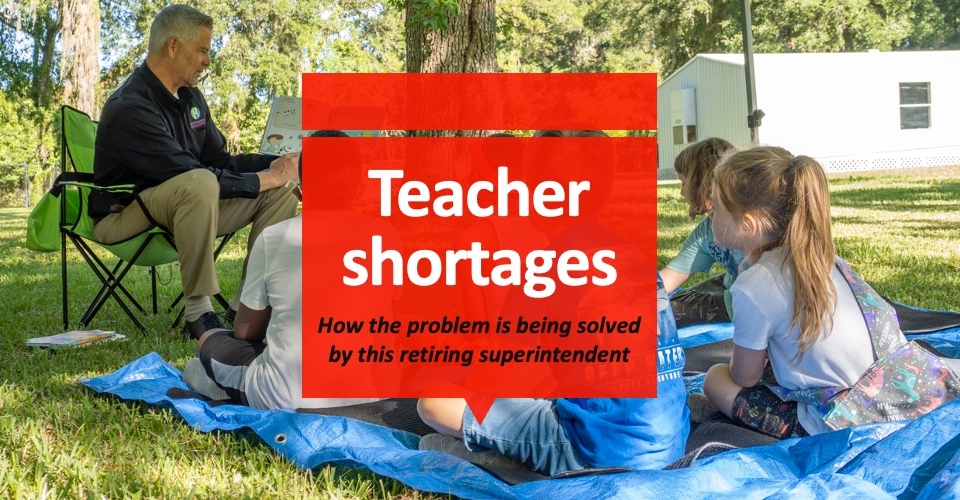Today 25 states mandate a standalone personal finance course in K12 schools, with more bills addressing financial literacy education advancing through state legislatures. While we can applaud progress toward requiring students to complete a personal finance course prior to graduation from high school, we should also recognize that this should be the bare minimum.
It’s time to raise the bar, aim higher and work to provide students with the foundation for lasting financial wellness.
While most financial education mandates are a solid starting point, these courses are typically one semester or just a few lessons wrapped within another subject. Importantly, many of these mandates are unfunded and don’t include professional development, leaving schools and educators on the hook without the means to teach them.
‘Talking Out of School’ podcast: Educating tomorrow’s superintendents
This is simply inadequate to be effective long-term.
Imagine if we taught math by mandating just a single semester-long course in high school. Or if we taught science by occasionally mentioning it in history classes. Yet, that’s exactly how financial literacy is taught in US schools—if it’s taught at all.
Financial literacy fundamentals
Our research, undertaken with the MassMutual Foundation, proves what should be obvious: multiple financial literacy interventions are more effective in increasing financial knowledge, self-efficacy and intended behaviors than one standalone course. Even in states with financial literacy education mandates, our surveys have found that only 35% of respondents, at most, later recall taking a financial literacy course.
Unless we begin to teach personal finance like we do math—starting in elementary school, when kids start to understand needs vs. wants, or at least by middle school, when research has shown that students have an “essentially adult” economic understanding—we’re letting our students down and wasting an opportunity to set them up for lasting financial wellness. This is especially true for students from economically challenged backgrounds, where basic financial topics aren’t always positively modeled or even discussed.
Financial education can be the cornerstone of a lasting, life-long “financial wellness foundation” built in the K12 years. To accomplish that, we’ll need sustained financial education, taught as a “core” education subject like math, science, English and history. Then, to be truly effective, and even life-changing, education must be paired with mentorship and career-focused connections, along with access to wealth-building services, tools and opportunities.
That means ensuring students have a foundational understanding of personal finance, including stocks and securities along with practical knowledge such as how to open bank accounts, create a budget, access student aid, manage loans and navigate credit, to name just a few. It also means focusing outside the classroom to help students connect to mentors and providing career-connected and work-based learning so they can get a real-world introduction to career possibilities and on-the-job skills.
Crucially, we must also increase young people’s access to banking services. Government research has shown that unbanked and underbanked households suffer many ongoing, damaging and far-reaching effects. Conversely, it’s known that young adults who open savings accounts earlier in life are more likely to invest, accumulate more wealth, and maintain positive relationships with financial institutes later in life.
Inspiring lifelong financial wellness
Is financial literacy worth all this effort? Study after study points to an emphatic yes.
Research from the National Institutes of Health has found that enhanced financial literacy can improve financial outcomes later in life, above and beyond regular schooling. In fact, more than one-third of U.S. wealth inequality could be accounted for by differences in financial knowledge. Other NIH studies have found financially literate individuals plan better, save more, earn more on their investments and manage their money better in retirement.
Compare how the US treats financial education to countries such as Denmark, where financial education is mandatory and taught like other subjects worthy of ongoing, multiyear coursework. It’s no coincidence the Danes lead the world in financial literacy.
Financial literacy policies that require a one-semester course or less are not enough. If we want to see students achieve true financial capability and wellness, parents, educators, legislators, nonprofit organizations and corporate America must come together to rethink how we approach personal financial education.
Our goal should be sustained financial education, taught as a “core” education subject, paired with mentor and career-focused connections, along with increased access to youth savings accounts and other financial tools. If we get it right, together, we can reduce our country’s wealth gap and inspire lifelong financial wellness for generations of Americans.









